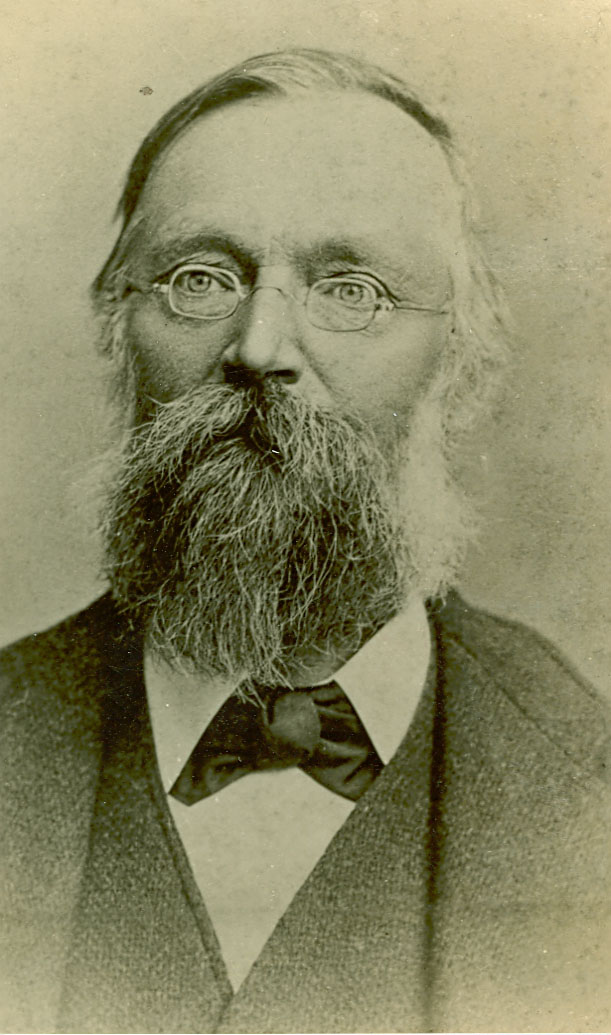Nathan Barrows (1830-1900):
Charter Faculty
|
Nathan
Barrows, born to Reverend Elijah Porter and Sarah Maria (Lee) Barrows on
February 20, 1830, began his life in Hartford, Connecticut. He attended the
Western Reserve College in Hudson, Ohio (now Case Western Reserve
University), where he joined Phi Beta Kappa and from which Barrows received
an Artium Baccalaureatus degree in 1850. Barrows also earned a
Master of Arts degree from Western Reserve in 1853. In 1855, Barrows
graduated from Cleveland Medical College as a
Doctor of Medicine. After teaching for one year (1855-1856) at Philips
Academy, he graduated from the College of Physicians and Surgeons in New
York City in 1857. Barrows then served as a house surgeon in Belleview
Hospital from 1858 to 1859 and practiced medicine in Newark, New Jersey
(1859-1860), New York City (1859-1859), Falmouth, Massachusetts (1862-1863),
and Sandwich, Massachusetts (1863-1865). In 1861, the outbreak of the Civil
War prompted Barrows to offer his services as a surgeon. He first joined a
regiment of the New York Volunteers, which disbanded before reaching the
front, and then attempted to enlist in the regular army, which rejected him
on account of his poor eyesight. While living in Falmouth, Barrows decided
to marry on December 20, 1862. Of the five children born to him and his
wife, Susan E. Hanes, two survived. Barrows then decided to focus on teaching, becoming the principal of Atkinson Academy in 1865. Between 1866 and 1862, Barrows also served as principal in Berwick Academy in Maine, Stevens High School in New Hampshire (which he also helped establish), and West Middle Grammar School in Connecticut. Additionally, Barrows taught mathematics at Kimball Union Free Academy in Meridan, New Hampshire, from 1871 to 1880. In 1882, Barrows departed New England for the south, living in Orange City, Florida until 1885. Barrows had an interest in botany and attempted to engage in fruit cultivation. Additionally, Barrows conducted some religious work, such as starting (and ministering) a Sunday school that eventually became one of thirteen Congregational Churches within the General Congregation Association of Florida, the organizer of Rollins College. Thus, in 1885 Barrows became a charter trustee of Rollins, a position he held until his resignation (as a consequence of declining health after a shipwreck experience two years prior) in 1894. At the Winter Park Congregational Church, Barrows functioned as a deacon, Sunday School superintendent, and teacher of the Bible class. Barrows moved to Massachusetts to pursue farming and died in East Bridgewater on March 3, 1900. Barrow’s interests included church, community life, and academia. Thus, his colleagues and students remembered Barrows best for his commitment to Rollins, particularly as a math professor. From 1885 until 1895, Barrows taught mathematics with great enthusiasm. One student described him as “one of the most beloved and valuable teachers,” because of his “devotion to duty…ready wit, ability as a teacher, and gentleness of manner, combined with his stern severity when occasion demanded.”[1] Additionally, Barrows utilized his abilities in other fields to the benefit of his students, often instructing Amherst boys in botany during the summer, keeping Rollins current on astronomical events, and contributing geological samples to the campus museum. Barrows’ “faith and zeal in all good enterprises was a prominent characteristic in his life.”[2] -Angelica Garcia |
||||
| Project Home | List of Names | Rollins Archives | Olin Library | Rollins College |
